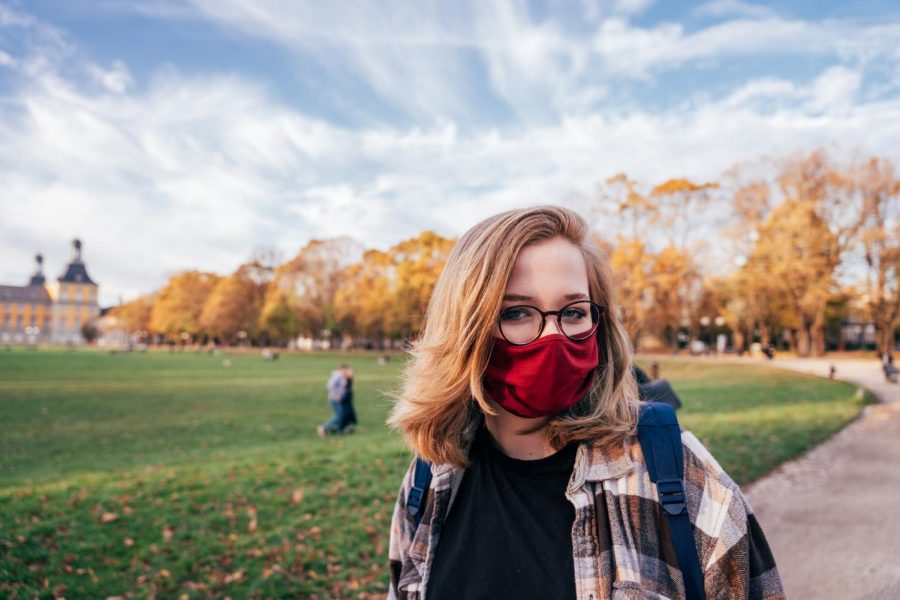Montgomery College’s Coronavirus Response Plan
April 7, 2021
On March 11, 2020, a memo was sent by Dr. Pollard, president of Montgomery College, to all Montgomery College community members. The memo contained information on the college’s Coronavirus Response Plan. That was a year ago. So how exactly is the college doing amongst this global pandemic?
In March of 2020, the number of reported cases at Montgomery College, across all three campuses, were only two, one employee and one student. In March of 2021, the number of reported cases at Montgomery College, across all three campuses, was only one, one employee. The total number of reported positive cases on all three campuses since March 2020 is 29, 21 employees, and 8 students. Only students and employees who have been approved for on-campus instruction or work are included in the COVID-19 case reporting.
As far as opening up the campus, a set of metrics was created to evaluate where Montgomery College is as an institution in comparison to the set of data from the state and the county. This set of metrics looks at seven different factors that serve as return indicators.
Those seven factors are:
- A seven-day average of new COVID cases in Montgomery County per 100,000 residents
- The percent of eligible County population vaccinated
- The COVID-19 test positivity rate
- The number of monthly reported internal cases
- The capacity available for implementing Montgomery College’s behavioral controls
- The number of weekly reports of non-compliance with MC’s behavioral controls
- Montgomery College’s emergency situational response
Those seven factors will determine when and how Montgomery College can start the process of opening up.
I met with Mr. Adam Reid, the interim director of public safety and emergency management at Montgomery College, Mr. Marcus Rosano, the director of media and public relations at Montgomery College, and Dr. Monique Davis, the dean of health sciences and director of nursing at Montgomery College, to discuss where they believe the college is in terms of the pandemic and the college’s plan for the future.
According to Mr. Reid, “we have been through many peaks and lulls since the beginning of the pandemic, and right now, we are headed into another peak.” However, he says, “this peak isn’t due to skyrocketing data. The data is trending in the right direction. The number of cases and the positivity rate are currently staying low.”
Mr. Reid discussed his thoughts that “the challenge now lies in vaccinations and getting as many eligible people in Montgomery County vaccinated as is possible.”
Montgomery County is the largest jurisdiction in the state of Maryland, which adds another challenge to the vaccination rate. As a county, we are not receiving an adequate number of supplies for the number of people that are in this county, and we cannot move as quickly as a result of that. According to Mr. Reid, “that is why our vaccination rate trends lower than the smaller counties in Maryland.”
The Montgomery County Department of Health and Human Services is the organization that facilitates and administers the county’s vaccination efforts. Montgomery College is working very closely with that department. The Department of Health and Human Services is closely looking at how to get enough vaccines to be used in Montgomery County.
The other part of this issue is that Governor Hogan has lifted all restrictions. Governor Hogan makes decisions based on a set of metrics that is separate from the metrics used to determine Montgomery College’s decisions and directives. Governor Hogan’s decisions affect the K-12 schools, not necessarily institutions for higher education.
As an institution, Montgomery College follows the guidance of Montgomery County directives. But the college does not lose its core principle of determining what is best for everyone’s health and safety at the college when making decisions regarding COVID-19. Since day one, the Coronavirus Advisory Team, along with other advisory teams at the college, have focused on everyone’s health and safety at the college, being of utmost importance with every decision made.
Dr. Davis emphasized that “now there is a lot of focus placed on K-12 schools, but Montgomery College has unique needs because it is not a residential institution, it is transient, and a lot of factors must be looked at when making decisions.”
Many different factors are being looked at when determining whether to open up the campus, including how students are coming to campus, whether that is by driving or public transportation. Other factors include whether students are living in multi-generational homes or with family members who are high risk.
Among the other issues that are being looked at, Dr. Davis mentioned that “there are students from early college programs all the way to students who may be changing careers and are in their 60’s.” It is easier to make decisions for K-12 schools, but when it comes to Montgomery College, they are looking at high schoolers all the way through the lifespan. And within that, vulnerable populations and individuals who may be high risk also have to be looked at. So, when decisions are being made, there are many factors and audiences that must be looked at, at one time. It is very challenging. That is why the prospect of opening up is a gradual and uncertain process.
Dr. Davis said that “the biggest piece in the discussion of how Montgomery College is doing amongst the pandemic since a year ago, is that as an institution we have been resilient, but it has definitely been put to the test.”
All the advisory teams that Dr. Pollard has put together have been looking at not only physical safety and people’s physical state but also have been looking at how the pandemic affects people’s emotional state. These advisory teams have been intentional in focusing on the mental and emotional effects of the pandemic as well as physical effects. There are many mental health resources for employees through the Human Resources Department and many students’ resources through the Student Health and Wellness Center.
Those and many other resources show that, as Dr. Davis mentioned, “the college is not only here to be an educational institution, but they are also here to be a strong contributor for the county’s needs.”
Mr. Rosano also emphasized that as an institution, “Montgomery College will not let their guard down because of how easily the virus can spread.” He also said that “the vaccination rates need to increase at a very high rate before we feel like we can relax certain restrictions.”
Mr. Reid echoed that by saying that “we cannot become complacent and lose sight of the importance of health and safety because the danger and risk of the virus will not just diminish. Everyone has a part to play in this pandemic, and it is very critical that people focus on doing their part whether they are vaccinated or not.”
Dr. Davis also mentioned that “it is still important for us to think about those who have been suffering at home with the virus and looking at what their long-term recovery looks like.” Remembering to factor in those who have had COVID-19 and seeing how opening up the campus will affect them is what the Coronavirus Advisory Team is committed to doing.
Mr. Rosano would like students to be informed and “continuously check your emails for updates on the college’s plans,” but he understands that as students, you get a lot of emails every day. So, if it is not possible for you to continuously check your email, stay connected to your instructors, who will know about the college’s plans. He wants students to make sure that they are not “left out in terms of knowing what the college is doing.”
The Coronavirus Advisory Team, and other advisory teams that Dr. Pollard has put together, are constantly looking at many different factors that affect the very diverse student population at Montgomery College. So, although we as students may feel that taking classes and participating in extracurriculars remotely is a never-ending experience, we have to remember that there are multiple people working on how to open up the campus while also following COVID-19 guidelines. It may be hard to tell where Montgomery College will be as an institution in the foreseeable future, but there are a set of metrics put in place and guidelines that are being followed in order to make sure that when we do return to in-person classes, we will do so safely and effectively.
_____________________________________________________
Resources:
Return to campus guidelines and metrics:
https://www.montgomerycollege.edu/coronavirus/health-and-safety/return-to-campus-guidelines.html#return-to-campus-metrics
Registration site to get the COVID-19 Vaccine:
https://www.montgomerycountymd.gov/covid19/vaccine/
Montgomery County Data Dashboard that includes a number of cases in the county:
https://montgomerycountymd.gov/covid19/
Testing, Tracing, and Reporting:
https://www.montgomerycollege.edu/coronavirus/health-and-safety/testing-tracing-reporting.html
Montgomery County Department of Health and Human Services:
https://www.montgomerycountymd.gov/HHS-Program/PHS/MontCares/MCLocations.html
Student Health and Wellness Center:
https://www.montgomerycollege.edu/life-at-mc/student-health-and-wellness/index.html
Montgomery College’s Human Resources Department:
https://info.montgomerycollege.edu/offices/human-resources/index.html
COVID-19 Testing Sites Information:
https://montgomerycountymd.gov/covid19/testing.html













Richard • Apr 13, 2021 at 3:59 pm
Awesome article! It’s good to know that we’re following protocols. Amazing writing by Reem, she did an incredible job providing clear details on what the people she interviewed provided.